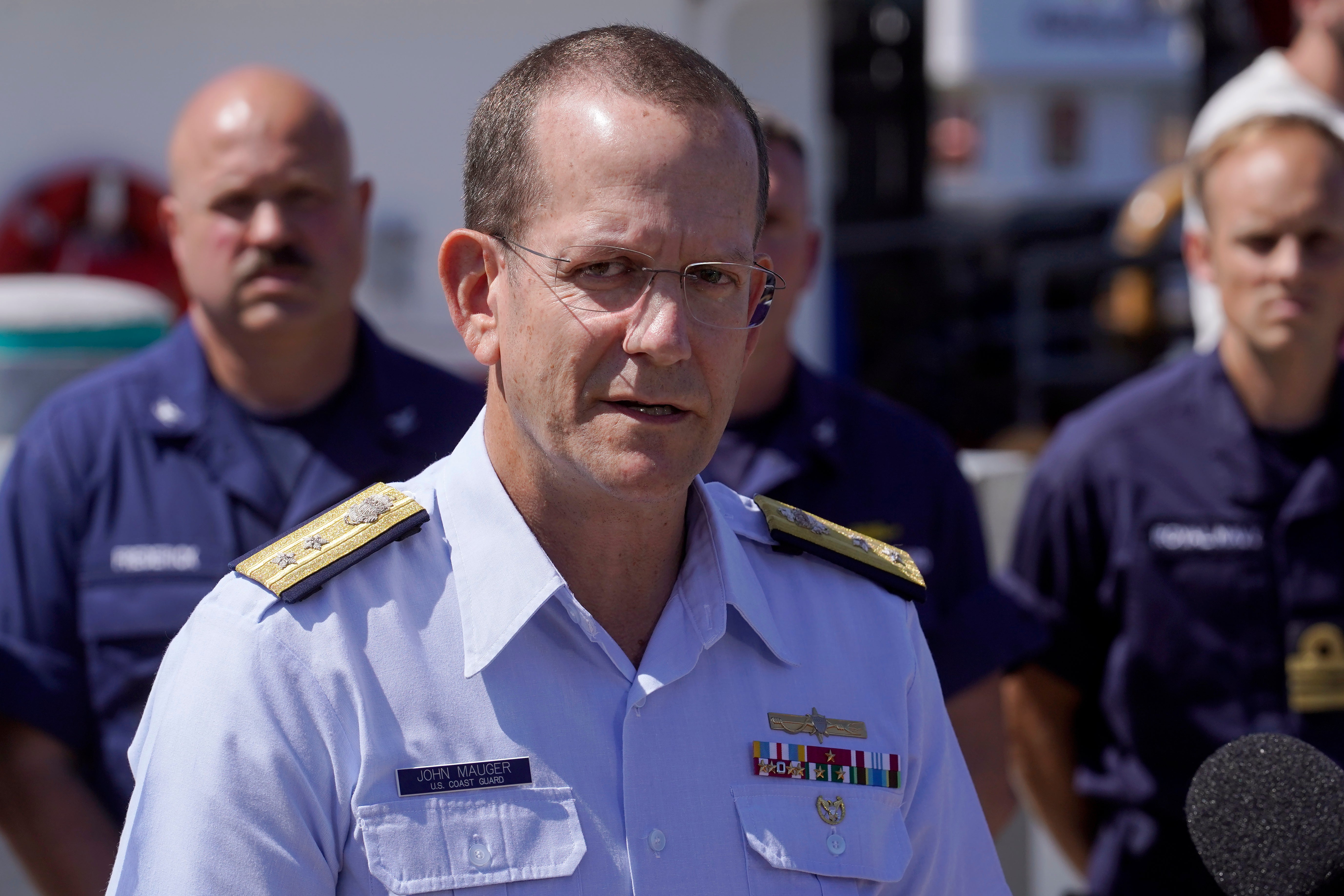Titan sub tragedy: Where is the debris field and what has been found?
Five pieces of wreckage found close to bow of Titanic on Atlantic Ocean seabed, confirming five men aboard lost sub were killed by ‘catastrophic implosion’
Your support helps us to tell the story
From reproductive rights to climate change to Big Tech, The Independent is on the ground when the story is developing. Whether it's investigating the financials of Elon Musk's pro-Trump PAC or producing our latest documentary, 'The A Word', which shines a light on the American women fighting for reproductive rights, we know how important it is to parse out the facts from the messaging.
At such a critical moment in US history, we need reporters on the ground. Your donation allows us to keep sending journalists to speak to both sides of the story.
The Independent is trusted by Americans across the entire political spectrum. And unlike many other quality news outlets, we choose not to lock Americans out of our reporting and analysis with paywalls. We believe quality journalism should be available to everyone, paid for by those who can afford it.
Your support makes all the difference.The hunt for the missing OceanGate Expeditions submersible the Titan ended in tragedy on Thursday when, hours after the craft exhausted its 96-hour oxygen supply, the US Coast Guard revealed that parts of the vessel had been found on the seabed.
That indicated a “catastrophic implosion” had likely occurred at some point since the sub’s disappearance on Sunday afternoon, which would have killed all five people on board. At least three of the crew were fee-paying tourists being taken to tour the disintegrating wreck of the doomed ocean liner the Titanic, which sank in 1912 at the cost of 1,500 lives and whose final resting place was only discovered in 1985.
The passenger list consisted of pilot and company founder Stockton Rush, renowned French explorer Paul-Henri Nargeolet, the businessmen Hamish Harding and Shahzada Dawood and the latter’s 19-year-old son, Suleman, whose sister has since said he was “terrified” of the trip and only agreed to take part as a Father’s Day gift.
Dr Dale Molé, the former US Navy director for undersea medicine and radiation health, offered the slim consolation that the five men would have died instantly and painlessly because of the sheer force of pressure at that depth of the sea once their vessel was compromised.
Follow the latest updates on the missing Titanic submarine here.
“It would have been so sudden, that they wouldn’t even have known that there was a problem, or what happened to them,” Dr Molé said.
“It’s like being here one minute, and then the switch is turned off. You’re alive one millisecond, and the next millisecond you’re dead.”
Where is the debris field?
The Titan had launched early on Sunday morning and was reported to have lost contact with its mothership, the chartered Canadian icebreaker the Polar Prince, that afternoon about 435 miles south of St John’s, Newfoundland. Its disappearance sparked a week-long rescue effort led by Canadian and Boston coast guard ships and planes.
Officials were hoping underwater sounds detected on Tuesday and Wednesday might help narrow their search, whose coverage area had been expanded to cover 10,000 square miles – twice the size of the state of Connecticut – and in waters 2 1/2 miles deep.
But all hope was lost on Thursday when a deep sea remotely-operated vehicle (ROV), equipped with cameras and sonar and deployed from the Canadian vessel Horizon Arctic, discovered debris from the vessel roughly 1,600 feet from the bow of the Titanic.

Speaking at a press conference, Rear Admiral John Mauger of the US Coast Guard said: “The debris is consistent with the catastrophic loss of the pressure chamber.”
What debris was found?
On precisely what was found, undersea expert Paul Hankin said: “We found five different major pieces of debris that told us that it was the remains of the Titan.
“The initial thing we found was the nose cone, which was outside of the pressure hull. We then found a large debris field. Within that large debris field we found the front-end bell of the pressure hull. That was the first indication that there was a catastrophic event.
“Shortly thereafter we found a second smaller debris field. Within that debris field we found the other end of the pressure hull – the aft end bell – which basically comprises the totality of that pressure vessel.”
A senior US Navy official has since revealed that, after the Titan was first reported missing on Sunday, its analysts went back and checked their audio data from a top-secret acoustic detection system and found an “anomaly”. That was consistent with an implosion or explosion in the general vicinity of where the vessel was operating when communications were lost.

As to what happens now, Rear Admiral Mauger said: “I know there are also a lot of questions about how, why and when did this happen. Those are questions we will collect as much information as we can about now.”
He added that the quest for answers was likely to prove a “complex case” because the disaster happened in a remote part of the ocean and involved people from several different countries.
ROVs will continue to search the Atlantic floor for clues about what exactly happened and when and will map out the debris field, with no timeframe in place at present to dictate how long their search efforts should continue.
Rear Admiral Mauger said it was uncertain whether any remains of the five men would ever be found.
Hollywood movie director James Cameron, an experienced deep-sea submariner since directing The Abyss (1989) and, even more pertinently, Titanic (1997), has since hit out at the inevitability of the tragedy and said the events of the week “felt like a prolonged and nightmarish charade”.




Join our commenting forum
Join thought-provoking conversations, follow other Independent readers and see their replies
Comments